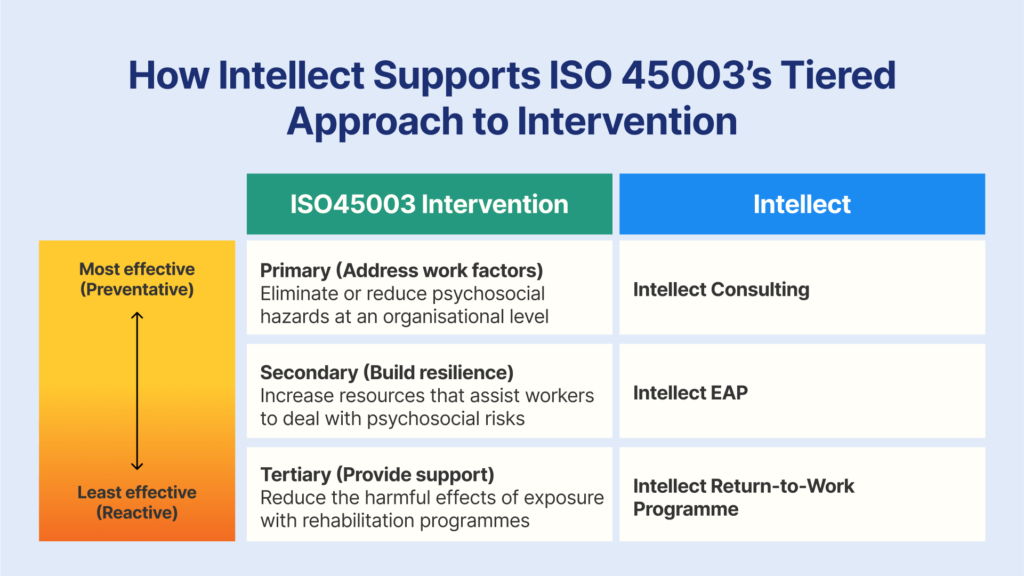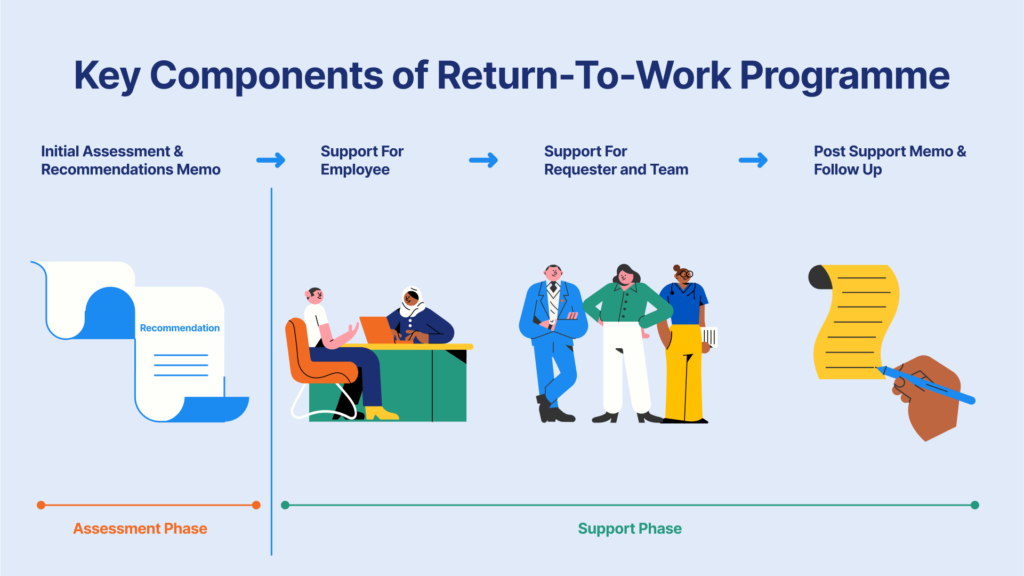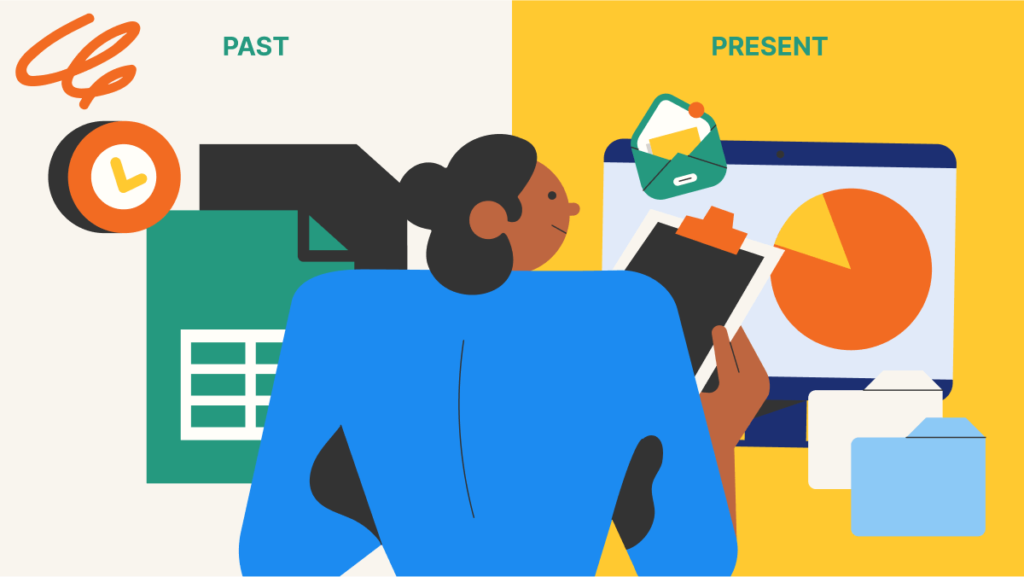Whether it’s mandatory safety gear and training for on-site staff or fire safety drills for office-based folks, you’re likely familiar with your employer’s protocols for managing physical hazards. Yet, despite their best efforts to protect our physical safety, another set of risks had fallen through the cracks: psychosocial hazards.
Bullying, harassment, and aggression are among the psychosocial hazards that are becoming increasingly prevalent in Australia. In Victoria, work-related mental injuries accounted for 18% of all new WorkCover claims in 2023 to 2024, up from 16% the year before, and just 9% prior to 2009.
The good news, though, is that change is already underway.
Psychosocial hazards Victoria: What’s coming in 2025
Australia’s evolving Work Health and Safety laws are set to place psychosocial hazards on equal footing with physical ones.
- 2021: Safe Work Australia released the Model Code of Practice on Managing Psychosocial Hazards at Work, alongside the introduction of ISO 45003, the international standard for managing psychological health and safety.
- 2022: The Work Health and Safety Amendment Regulation 2022 further advanced this shift by formally incorporating specific requirements for managing psychosocial risks.
- Q4 2025 (Coming soon): The Victorian Government is expected to announce new regulations in October, with implementation scheduled for December. Once in place, every Australian jurisdiction will have formalised regulations targeting the management and control of psychosocial hazards.
According to the consultation draft, Victoria’s upcoming regulations aim to provide employers with clearer guidance on identifying and managing psychological hazards at work. This includes the introduction of a compliance code to support implementation.
With these changes on the horizon, now is the perfect opportunity to strengthen your workplace culture. Partners like Intellect can help you go beyond compliance and build psychological safety that drives engagement, performance, and long-term business success.
What are psychosocial hazards?
Put simply, psychosocial hazards are the psychological stressors that emerge from a person’s social and workplace environment. These risks often have deeper, systemic roots—such as toxic leadership—making it essential for organisations to tackle the underlying causes rather than just treating the symptoms.
Imagine that you are working under a manager who publicly humiliates you for speaking up in meetings or who makes inappropriate remarks about your appearance. Even in an office that meets all physical safety standards, such experiences can put you in a constant state of fight, flight, or freeze.
The consequences go beyond diminished work performance, as chronic exposure to psychosocial hazards can seriously undermine mental health, leading to conditions like anxiety, depression, Post-Traumatic Stress Disorder (PTSD), and sleep disorders.
While psychosocial risks like bullying and harassment are overt, others are more subtle. Below are the 17 psychosocial hazards identified in Managing Psychosocial Hazards at Work Code of Practice 2024.
Psychosocial hazards examples
- Job demands
- Job insecurity
- Low job control
- Fatigue
- Poor support
- Lack of role clarity
- Poor organisational change management
- Inadequate award recognition
- Poor organisational justice
- Traumatic events or material
- Remote or isolated work
- Intrusive surveillance
- Poor physical environment
- Violence and aggression
- Bullying
- Harassment including sexual harassment
- Conflict or poor workplace relationships and interactions
Psychosocial hazards in the workplace can arise from different aspects, such as:
- The design or management of work: An employee working remotely may experience low job control when constant keystroke monitoring limits their autonomy.
- The work environment: A social worker conducting home visits may be exposed to violence and aggression when supporting clients in domestic violence situations.
- Plant at a workplace: A machine operator may experience fatigue when required to maintain intense focus for long hours without adequate breaks.
- Workplace interactions or behaviours: A whistleblower may experience poor organisational justice when their identity is disclosed despite assurance of confidentiality.
Managing psychosocial hazards at work
How do we prevent psychosocial hazards in the workplace? Under the framework of the Workplace Health & Safety (WHS) Act 2011, compliance involves a structured, four-step process.
1. Psychosocial risk assessment: Start by conducting a comprehensive psychosocial risk assessment across the organisation to identify gaps.
2. Psychosocial risk report: Create a report comprising findings and recommendations, ranging from eliminating specific psychosocial hazards to redesigning workflows and adjusting policies.
3. Intervention implementation: Implement targeted interventions that minimise psychosocial hazards and enhance mental health outcomes.
4. Monitor, control and evaluate: Establish a system to monitor, control and evaluate their effectiveness and continue flagging psychosocial hazards.
Understandably, this process can feel overwhelming for employers—and that’s where we come in. Aligned with ISO 45003 framework, Intellect functions as a primary, secondary and tertiary intervention all in one.

Trusted by some of the world’s largest companies and over four million members globally, we address risks before they arise, mitigate them when they do, and support recovery when harm occurs.
How Intellect manages psychosocial hazards in the workplace
1. Primary: Intellect Consulting
As a primary intervention, Intellect Consulting focuses on organisational-level controls that eliminate or reduce psychosocial hazards. Our 4-phase framework is perfectly aligned with the compliance stages outlined in regulations, integrating diagnosis, design, implementation and measurement into one cohesive journey.

Phase 1: Diagnostics and Gap Analyses
We begin by using Intellect’s Psychosocial Risk Assessment & Consulting tool to evaluate psychological risk levels across your organisation. Our tool accounts for validated dimensions such as:
| DOMAIN | ITEM (ADAPTED FROM) |
| Workload & demands | – I have too much time to do in the time I’m given. (COPSOQ II, WHSQ) – I often feel emotionally drained at work. (COPSOQ II, ISO45003) |
| Job control | – I have little say over how I do my work. (HSE, WHSQ, JCQ) – I rarely get to decide when to take breaks. (HSE) |
| Role clarity | – I’m unclear about what’s expected of me in my role. (COPSOQ II, WHSQ) |
| Support | – I can rely on my manager if things get rough. (COPSOQ II, WHSQ) – My team supports each other when someone is struggling. (COPSOQ II) |
| Recognition & fairness | – I feel my work is recognised and appreciated. (ERI, COPSOQ II) – Decisions here are made fairly and transparently. (COPSOQ II, WHSQ) |
| Change management | – I’m kept informed during changes that affect my work. (HSE, ISO45003) |
| Workplace relationships | – I’ve experienced or witnessed disrespectful behaviour at work. (WHSQ, NOM-035) – People in my workplace treat each other with kindness and respect (COPSOQ II, WHSQ) |
| Work-life balance | – Work often interferes with my personal or family life. (COPSOQ II, WHSQ) |
If your organisation is already on Intellect EAP, that’s perfect. We can incorporate that data to deliver a more complete picture of your organisation’s risks.
Most importantly, it allows you to pinpoint specific roles, teams, and locations where risks are the most prevalent, setting the stage for Phase 2.
Phase 2: Strategy and Solution Design
Based on our findings, our Organisational Wellbeing Consultancy team will design interventions to address specific psychosocial hazards. This isn’t about offering quick fixes, like generic mindfulness sessions, but embedding wellbeing deeply into your leadership, culture, and policies.
Phase 3: Implementation and Intervention
Our consultancy team doesn’t just flag problems, we partner with you to solve them. In close collaboration with Work Health and Safety leaders, we ensure every control implemented is tied to a measurable reduction in risk exposure.
Here are some evidence-based strategies we may use to address the psychosocial hazards identified in your organisation.
| PSYCHOSOCIAL HAZARD | CONTROL |
| Change management | Leadership: Executive coaching to manage transitions (e.g. organisational restructuring) more smoothly |
| Poor support | Culture: Managerial coaching to support healthy team dynamics and Mental Health First Aid (MHFA) training to establish a peer support network |
Job control | Policies: Flexible work arrangements to increase employee’s autonomy over working hours and locations |
Phase 4: Post-intervention Evaluation
After the interventions have been in place for some time, we track their impact on key outcomes ranging from employee wellbeing to productivity. To simplify this process, our Intellect Echo tool:
- Administers psychosocial risk assessments and pulse surveys
- Accelerates insight generation for leaders to respond quickly and confidently
- Enables ongoing compliance reporting for regulators and internal WHS audits
2. Secondary: Intellect EAP
As a secondary intervention, Intellect EAP strengthens employee resilience by equipping employees with resources to manage stressors before they escalate.
Unlike traditional EAPs with wait times of up to three weeks, Intellect connects employees to care in an average of just 24 hours (1.04 days). The breadth of our offerings also ensures that support is not just reactive but preventative, addressing psychosocial risk in a timely and effective manner.
| PSYCHOSOCIAL HAZARDS | PRODUCT/SERVICE |
| Workplace relationships | Intellect Proactive Self-care resources on topics like boundaries and conflict resolution help with navigating interpersonal challenges. |
| Role clarity | Intellect Coaching Professional guidance hones communication and self-advocacy skills that empowers one to articulate their needs. |
| Job insecurity | Intellect Holistic Financial coaching supports employees facing monetary challenges in moving from distress to an action-focused mindset. |
| Traumatic events or material | Intellect Care Clinical-grade psychotherapy offers evidence-based treatments for conditions such as PTSD. |
| Workplace harassment | Intellect Helpline Trained professionals support employees in moments of acute distress while safeguarding their anonymity. |
*Intellect Care and Intellect Helpline also function as tertiary interventions by reducing the harmful effects of exposure to psychosocial hazards.
3. Tertiary: Intellect Specialised Care
As a tertiary intervention, Intellect’s Return to Work programme functions as a rehabilitation system that supports employees in regaining their mental health and workplace functioning.
Imagine a content moderator who has been directly exposed to traumatic material, diagnosed with PTSD, and has taken time off to recover. After a few months, how do you determine whether they’re ready to resume regular duties? Does that mean diving back in immediately? And how do you communicate this transition to their manager and peers?
Our Return to Work programme was designed with this reality in mind, helping employers:
- Assess psychological readiness to return: Clinical psychologists with experience in return-to-work assessments and rehabilitation planning evaluate the employee’s readiness to re-enter the workplace.
- Provide expert recommendations for employees and employers: Flexible work arrangements allow employees to meet their mental health professionals during office hours, ensuring treatment continuity without added stress.
- Create a supportive environment for sustainable reintegration: Quarterly coaching sessions help managers and peers who work directly with the returning employee become effective allies.

Paired with ongoing support through Intellect EAP, a structured reintegration plan acts as a safety net, empowering affected employees to build resilience and return with confidence.
Keeping psychosocial hazards in check
Did you know that mental wellbeing is the strongest predictor of employee productivity? That’s why leading firms are embedding psychological safety into their core strategy instead of treating it as an afterthought.
This also means that psychosocial hazards aren’t just an HR issue; they’re an enterprise-wide concern with significant implications for business performance. Employers who address these risks proactively don’t just stay compliant; they outperform with higher retention, improved morale, and fewer incident claims.
Book a demo today and start building a safer, healthier, and more productive workplace.








